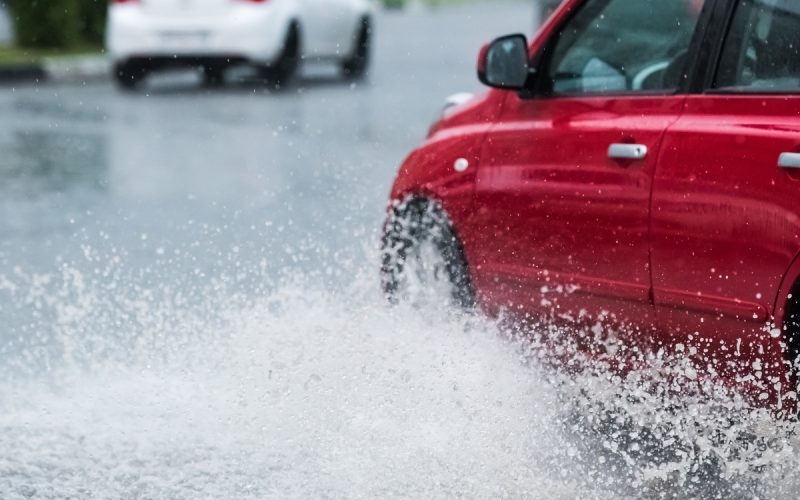Heavy rain and flooding can create hazardous conditions for drivers, especially if the storm hits when you’re away from home. If you’re on the road, navigate through the flooded roads safely to protect yourself and your vehicle from harm.
Assess the Depth Before Driving
Never assume a flooded road is shallow, and always use nearby vehicles, curbs, or signs as reference points for its depth. Water as shallow as six inches can stall most cars or even cause a loss of control.
Avoid Standing Water When Possible
If you see a flooded section of the road, turn around or take a detour. Driving through standing water increases the risk of hydroplaning, engine damage, or even losing traction entirely.
Drive Slowly and Steadily
When entering shallow water, reduce your speed to avoid creating waves or losing control. Water splashing into your engine compartments or undercarriage can create serious issues, which could damage your splash shield and lead to unnecessary repair costs.
Stick to the Center of the Road
Floodwater tends to be deeper near the edges of the road, so by driving along the center, you reduce the chance of encountering deep patches. Also, keep extra space between your car and the vehicle ahead to avoid collisions in case of sudden stops or reduced visibility caused by water spray.
Check Your Brakes After Getting Through Water
Once you’ve safely crossed a flooded area, lightly tap your brakes a few times to test and dry them. Wet brakes can reduce stopping power, which makes it more difficult to control your vehicle.
Turn Around if the Water Looks Fast-Moving
Roads flooded with fast-moving water pose an extreme danger for drivers, so don’t risk driving through the stream! Even a few inches of rushing water can sweep a car away and force you to lose control.
Look Out for Hidden Hazards
Floodwater can conceal potholes, tree branches, or even debris. As you safely navigate through flooded roads, approach slowly and be prepared to stop if needed.
Never Restart Your Car if It Stalls
If your car stalls in floodwater, trying to restart it can cause severe engine damage. Instead, exit the vehicle and find safety at a nearby business until the storm passes.
The best way to keep you and your vehicle safe during a flash flood is to stay out of large bodies of water whenever possible. Once the flood subsides and you’re home in one piece, inspect your vehicle for any structural damage and schedule maintenance immediately to address any necessary repairs before they escalate.

